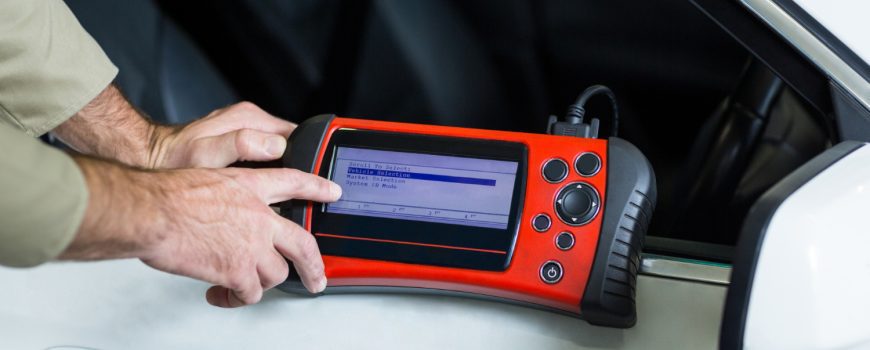If you have ever thought of upgrading your car’s performance or improving fuel efficiency, then you will probably come across words like ECU flash, ECU reflash, or ECU tune. At first glance, they can all look the same, but they actually incorporate or include different ways to update or modify your car’s engine control unit (ECU). The ECU is like the brain of your car, it controls how your engine behaves, including power generation, fuel consumption, and emissions. By changing the software in the ECU, you can improve performance, smooth driving, or fuel economy. But not all ECU updates are the same. Some are quick software upgrades, while others are full custom tunes based on your specific driving requirements or modifications. Here you came to know how they work and the comparison between them.
Table of Contents
Why is the ECU So Important?
Before diving into flash, reflash, and tuning, let’s quickly comprehend what an ECU is.
The ECU (Engine Control Unit) is a small but effective computer in your vehicle that manages how the engine operates. It constantly reads information from various sensors like oxygen, temperature, and throttle role sensors and makes use of those statistics to make real-time selections. These choices manipulate such things as gas injection, ignition timing, air-to-gasoline ratio, and engine idle speed. In easy phrases, the ECU is the mind of your engine, ensuring the whole lot runs smoothly, successfully, and adequately.
What Does It Mean to Flash Your ECU?
An ECU flash is the method of installing a new software program on a vehicle’s Engine Control Unit (ECU). The term “what is an ECU flash” refers to the method of updating the ECU’s internal programming to adjust how the engine behaves, often for improved overall performance, higher gasoline performance, or to clear up producer-diagnosed problems. The call “flash” comes from the act of writing facts to the ECU’s flash memory chip, much like updating a telephone or PC. This method replaces the prevailing software with a more recent or optimized model without requiring any hardware adjustments. ECU flashing is commonly used to guide new engine additives or release better driving dynamics.
Typical Uses
- Changing the fuel map for more power
- Updating the ECU with better factory settings
- Removing speed limiters
What Happens During an ECU Reflash?
An ECU reflash will be very just like an ECU flash; however, there will be a key difference in motive and technique. If you are curious, “what an ECU reflash is?”, it’s important to apprehend that even though flashing is frequently a method of installing a totally new software program, a reflash normally modifies the original manufacturing facility settings in preference to replacing them completely. It entails updating the ECU’s modern-day software program to decorate normal overall performance, help modifications, or restore current issues. Think of it as exceptionally tuning the original software in place of wiping and replacing it. Reflashing is normally used when including bolt-on enhancements like a new exhaust or consumption device.
Typical uses
- Tuning your car for better performance
- Adjusting engine settings to match aftermarket parts (like a turbo)
- Restoring stock settings
What Does ECU Tuning Mean?
An ECU track (additionally known as ECU tuning) refers back to the system of fixing or optimizing the software program that controls your engine. The term “What is an ECU tune?” Or “what is an ECU tuning?” This refers to a technique that could consist of ECU flashing and reflashing but regularly goes past that with greater, personalized, performance-focused adjustments. Tuning is generally done to grow horsepower, improve throttle reaction, or adapt the ECU to performance enhancements like a turbocharger or racing exhaust. Unlike fundamental flashing, an ECU tune is often customized to your unique vehicle, driving style, and performance dreams. It’s the most bendy and effective approach for unlocking your engine’s complete capacity.
Typical uses
- Custom tunes for race cars or modified vehicles
- Improving throttle response and horsepower
- Balancing performance and fuel economy
What is the Purpose of ECU Coding?
ECU coding refers to allowing or disabling specific features on your car, together with the begin/prevent machine or virtual display. When questioning “what ECU coding is?”, it’s important to observe that, in contrast to tuning, it does not affect overall engine performance but focuses on modifying consolation, convenience, and safety settings. It is essentially about customizing how the automobile behaves to suit your possibilities. ECU coding is regularly used to unencumbered or disable functions that might be confined or hidden by the producer, providing more control over your car’s functionality.
What Does a Flash Tune Do?
A flash tune is a type of ECU tune where new overall performance settings are loaded into the ECU using a flash device. When asking “what a flash tune is?”, it refers to a sincere and extensively used method for optimizing engine performance via software updates. Flash tuning is popular as it’s quick, cost-effective, and able to hand over major performance upgrades without good-sized adjustments.
Compare and Contrast: ECU Flash vs. Reflash vs. Tune
| Feature | ECU Flash | ECU Reflash | ECU Tune |
| Basic Definition | Writing new data to ECU | Modifying factory data | Adjusting ECU settings |
| Purpose | Software update or tune | Performance improvement | Full engine optimization |
| Factory or Custom? | Often factory | Mix of factory and custom | Mostly custom |
| Reversible? | Sometimes | Yes | Depends on the method |
| Tools Needed | Flashing tool | Diagnostic/tuning tool | Tuning software |
Pros and Cons
ECU Flash
Pros:
- Simple and fast
- Can restore factory defaults
- Often done by dealers or manufacturers
Cons:
- Less flexible than custom tuning
- Not always optimized for aftermarket parts
ECU Reflash
Pros:
- Can fine-tune specific settings
- Works well with bolt-on modifications
- Reversible and relatively safe
Cons:
- Needs some technical knowledge
- Can void your warranty
ECU Tune
Pros:
- Best performance potential
- Completely customizable
- Great for racing or heavily modified cars
Cons:
- More expensive
- Needs expertise or professional help
- Risk of damaging engine if done poorly
Pricing Comparison
| Type | Average Cost (USD) | Notes |
| ECU Flash | $100–$300 | Often done at dealerships or service centers |
| ECU Reflash | $200–$600 | May include minor tuning |
| ECU Tune | $400–$2,000+ | Custom tunes can be expensive |
Prices vary by vehicle model, location, and the tuner’s reputation.
Compatibility Comparison
| Method | Compatible with Stock Cars | Compatible with Modified Cars | Best For |
| ECU Flash | Yes | Not ideal | Software updates |
| ECU Reflash | Yes | Yes | Light to moderate modifications |
| ECU Tune | Maybe | Best option | Heavy mods and race setups |
Which One Is Right for You?
- If you just want better fuel economy or throttle response, go for an ECU flash or mild reflash.
- If you’ve added a cold air intake or new exhaust, try a reflash to match the new setup.
- If you’ve built a track car or added a turbo kit, you need a full custom ECU tune.
Things to Consider Before Tuning
- Warranty: Some flashes or tunes void your manufacturer’s warranty.
- Fuel Quality: Many tunes require high-octane fuel.
- Emissions: Tuning might make your car non-compliant in some countries.
- Reliability: An aggressive tune can increase engine wear if not done right.
Conclusion
In conclusion, an ECU flash, ECU reflash, and ECU tune are all methods for modifying your car’s engine control unit to improve performance, fuel efficiency, or adapt to new modifications. While flashes are quick updates, reflashes modify existing software, and ECU tunes offer the most customized and comprehensive changes for performance optimization. The choice between them depends on your specific needs, whether it’s a simple upgrade, compatibility with aftermarket parts, or maximizing horsepower for a modified car. Whatever option you choose, it’s crucial to ensure the process is done properly to avoid damaging your engine or voiding your warranty.
FAQs
- What’s the difference between an ECU flash and an ECU reflash?
An ECU flash involves installing entirely new software, while a reflash modifies the original factory settings to fine-tune performance.
- Is an ECU tune always necessary for performance upgrades?
No, but if you’ve made significant modifications like a turbocharger or performance exhaust, a custom ECU tune is often required to optimize engine settings.
- Can flashing the ECU void my warranty?
Yes, certain ECU flashes, especially those not done by a dealership, may void the manufacturer’s warranty.
- Can an ECU flash grow horsepower?
Yes, an ECU flash can decorate engine overall performance, inclusive of boosting horsepower, depending on the sort of flash and car.
- What’s the chance of doing an ECU tune without expert assistance?
Incorrect tuning can damage your engine, cause reliability troubles, or lead to negative gasoline efficiency if no longer done properly.
- Is ECU coding related to performance tuning?
No, ECU coding focuses on enabling or disabling car features (like digital displays) and does not affect engine performance.









